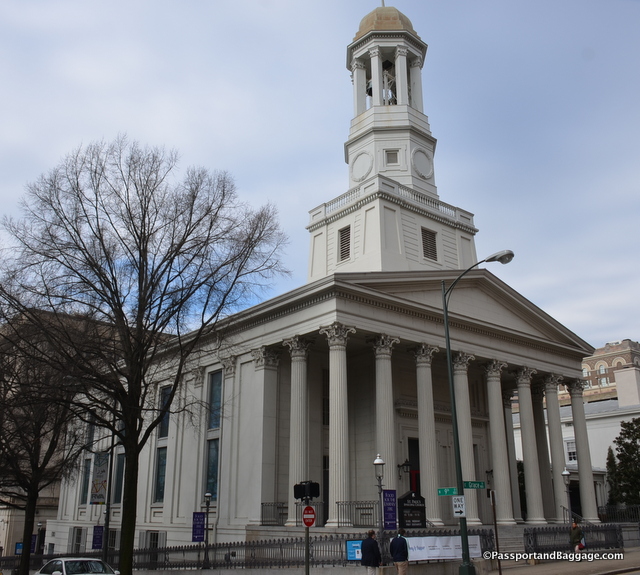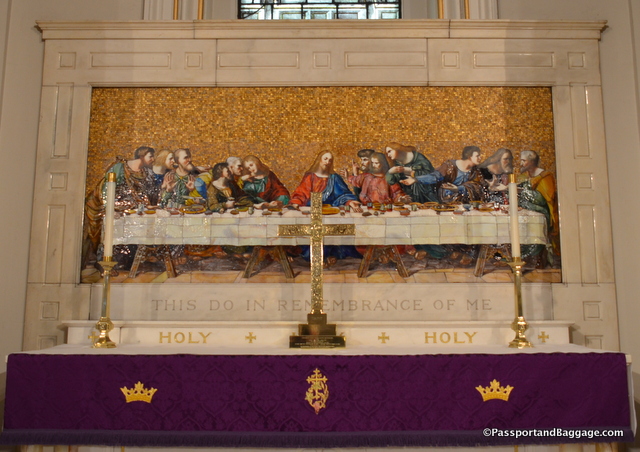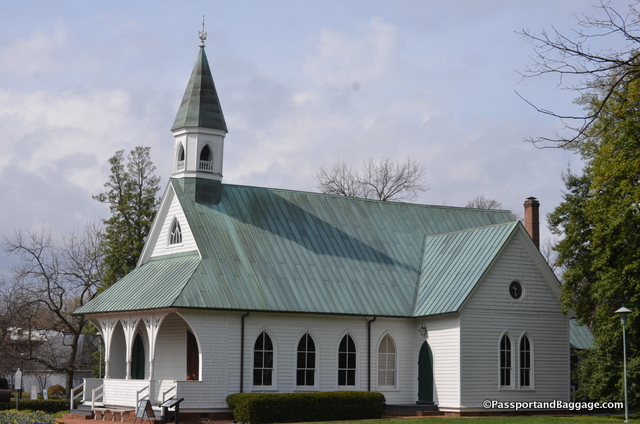Saint Paul’s Episcopal Church
815 E. Grace Street
and
Confederate Memorial Chapel
2900 Grove Avenue
Saint Paul’s is located directly across the street from the Virginia State Capitol, and has long been a popular house of worship for political figures, including General Robert E. Lee and Confederate President Jefferson Davis.
The first Episcopal church in Richmond was Monumental Church. However, Monumental’s congregation had begun to outgrow its building so its assistant rector, Reverand William Norwood, led an effort to found a new Episcopal church to accommodate the expanding membership. They had grand plans for this new venture and no church as large as the one planned (seating for 800 people) had ever been built in Virginia. A committee was formed to visit northern cities and view recently constructed large urban churches. While touring Philadelphia, the committee became enamored by the spacious St. Luke’s Church (now The Church of St. Luke and the Epiphany) and determined it should be the model for what would become St. Paul’s. The committee commissioned the architect of St. Luke’s, Thomas S. Stewart, to design a near replica for Richmond. Steward had also designed the Egyptian Building nearby for the University School of Medicine. The resulting building by Stewart was consecrated in 1845. It is of Greek Revival style, and a complement to Jefferson’s temple-form capitol across the street.
There is an amazing amount of history within this church, including the over 20 stained glass windows, some of which are by Tiffany Studios.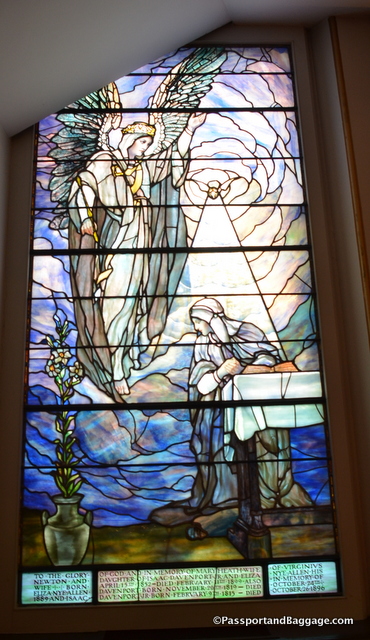
This is The Annunciation, installed in 1901 and by Tiffany.
The Last Supper, also by Tiffany Studios was installed in 1896. This stained glass mosaic is without a doubt, the foremost work of art in St. Paul’s.
The ceiling incorporates a variety of Greek-style motifs that surround a gold medallion with rays terminating in a Tetragrammaton, a triangular symbol of the Trinity with the four Hebrew letters for Yahweh (God).
Pew 111 Is where General Robert E. Lee’s family sat and pew 63 is where Confederate President Jefferson Davis worshiped from 1861 to 1865. It was during a church service that Davis received news that Lee could no longer defend Richmond, leading to the evacuation of the city and the subsequent fire which destroyed much of downtown, but not Saint Pauls.
On the grounds of the Virginia Museum of Fine Arts stand the Confederate Memorial Church.
The Confederate Memorial Chapel served as a nondenominational house of worship for the Robert E. Lee Camp Confederate Soldier’s Home. The Home was the first successful and longest operating residential complex for poor and infirmed southern veterans of the Civil War.
The chapel cost $4000 and was built with proceeds from benefit auctions of tobacco. The chapel was designed by architect Marion J. Dimmock, in the Carpenter Gothic style. Carpenter Gothic, also called Rural Gothic is a North American architectural style-designation for an application of Gothic Revival architectural detailing and massing applied to wooden structures built by house-carpenters.
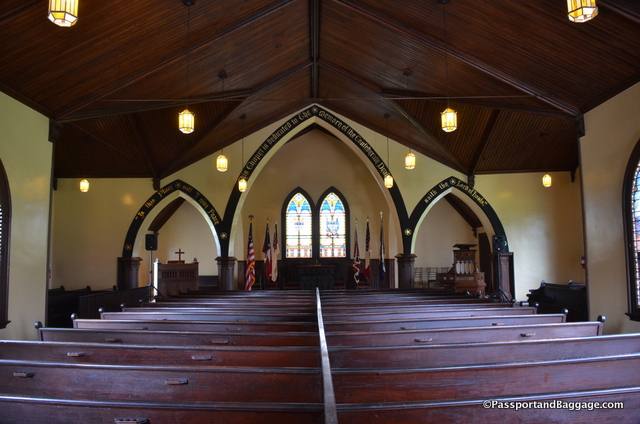 The interior has pine floors and a vaulted ceiling with rows of hand-hewn pews. The various Belcher Studio stained glass windows are of interest in their unique style.
The interior has pine floors and a vaulted ceiling with rows of hand-hewn pews. The various Belcher Studio stained glass windows are of interest in their unique style.
 *
*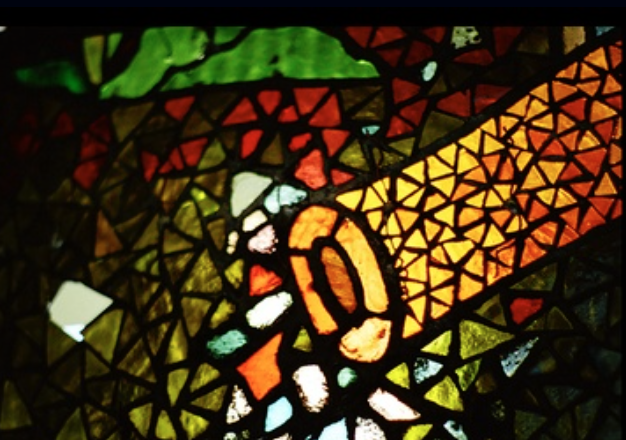 Henry Belcher applied for four patents for his mosaic process between 1884 and 1889. To make its windows, the New York company assembled small pieces of glass—”not larger than one half-inch across”—into the desired pattern, arranging them around larger pieces of glass used for some of the elements of the designs. The whole mosaic was then sandwiched between two larger sheets of asbestos. The artisan poured in a liquid metal alloy, which would snake its way between the pieces and bind them together.
Henry Belcher applied for four patents for his mosaic process between 1884 and 1889. To make its windows, the New York company assembled small pieces of glass—”not larger than one half-inch across”—into the desired pattern, arranging them around larger pieces of glass used for some of the elements of the designs. The whole mosaic was then sandwiched between two larger sheets of asbestos. The artisan poured in a liquid metal alloy, which would snake its way between the pieces and bind them together.
The chapel is open every day from 10:00 am to 4:00 pm
